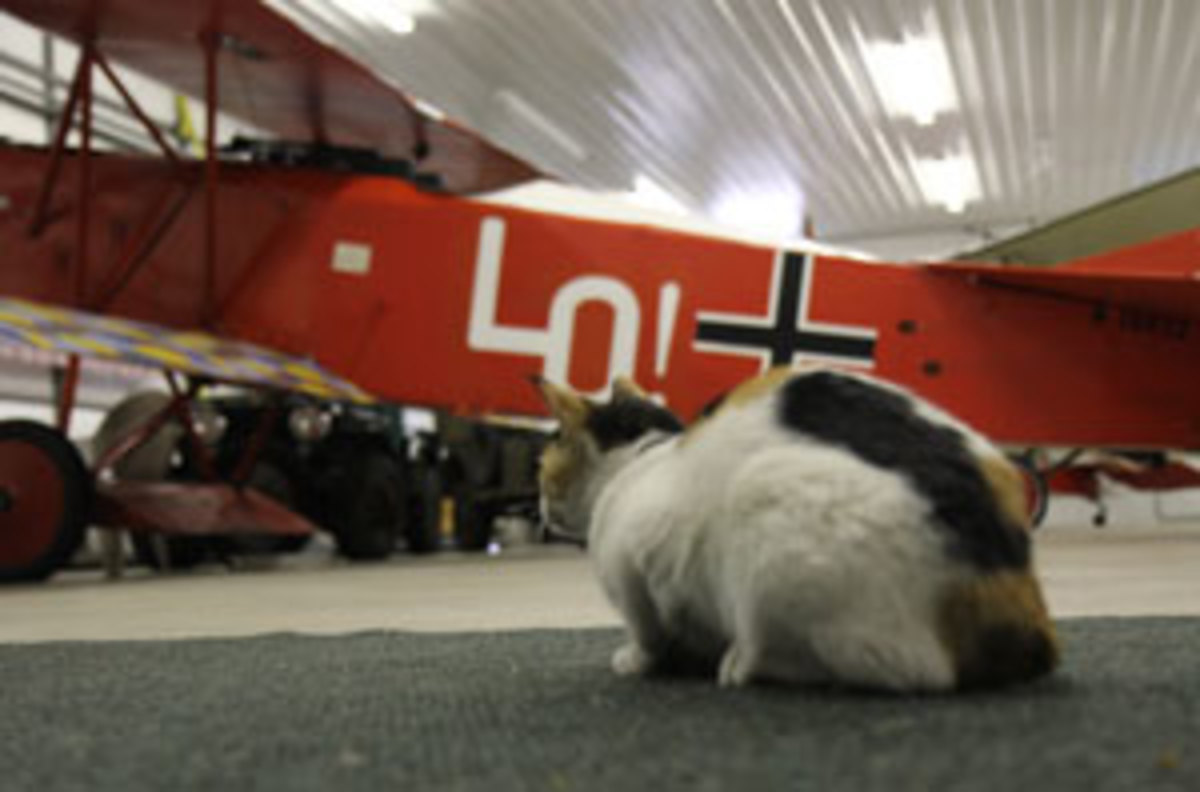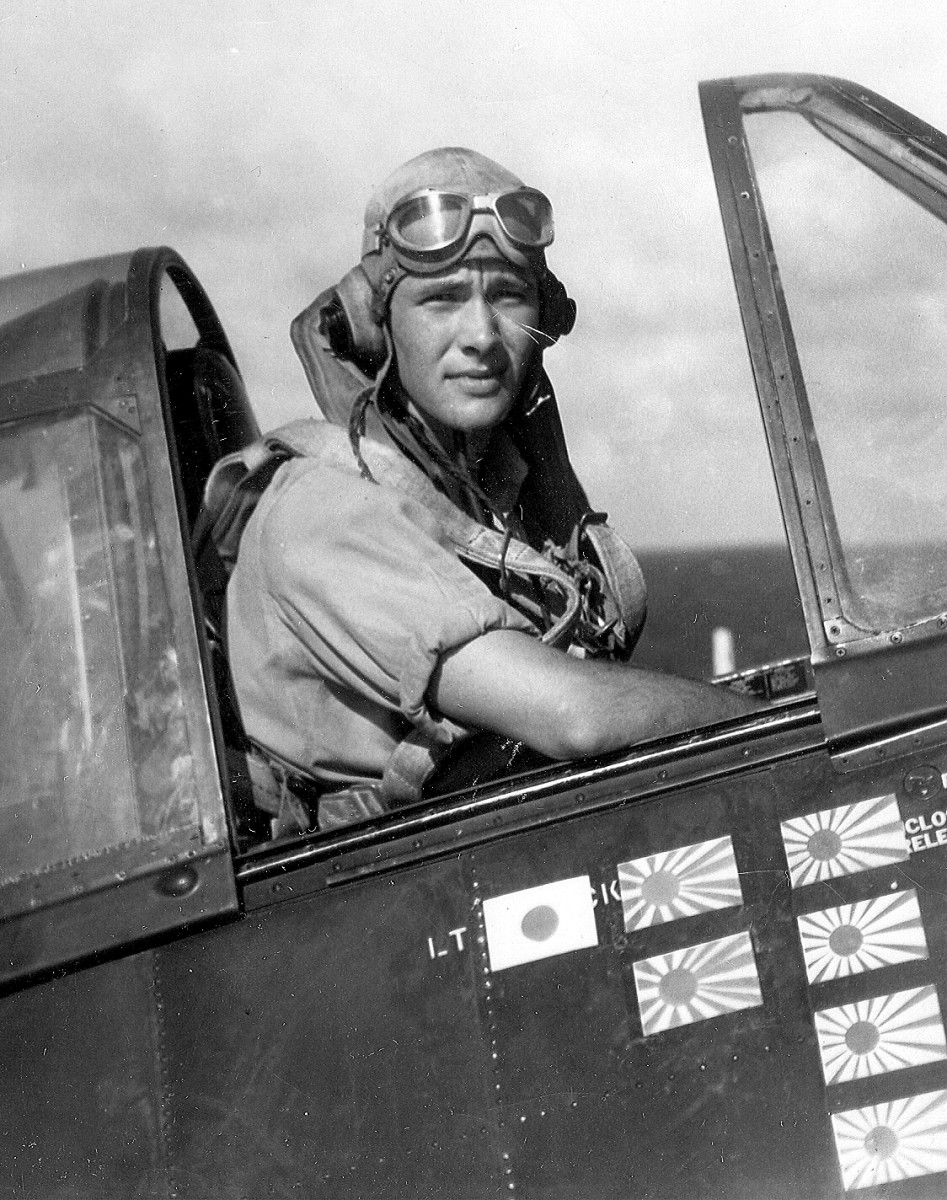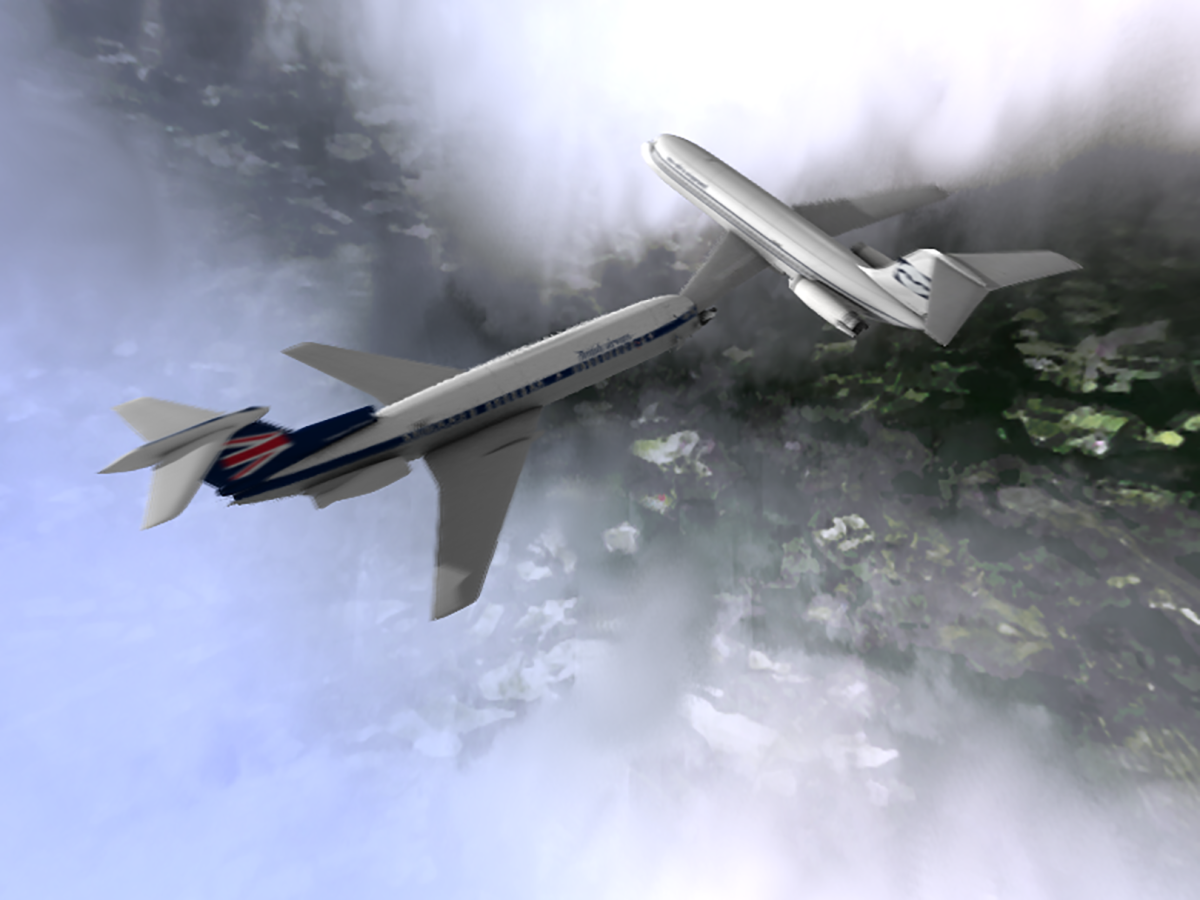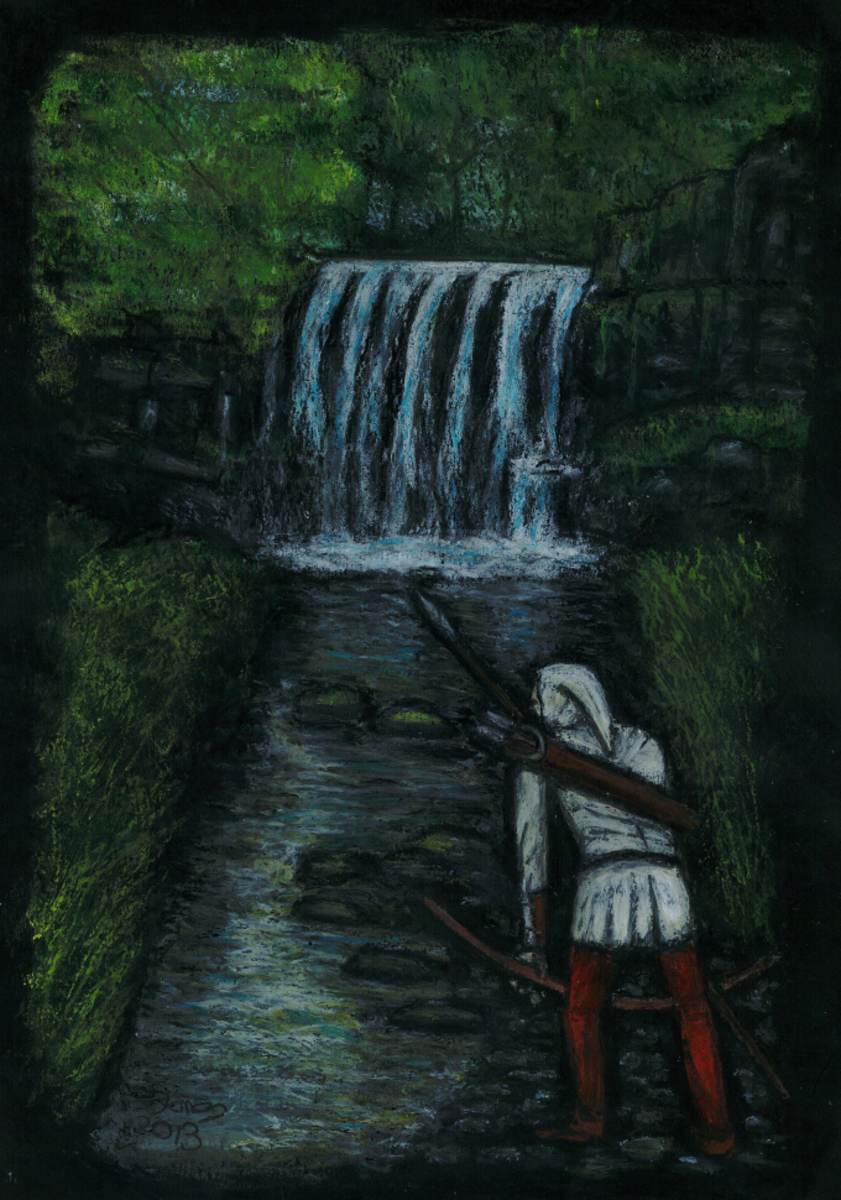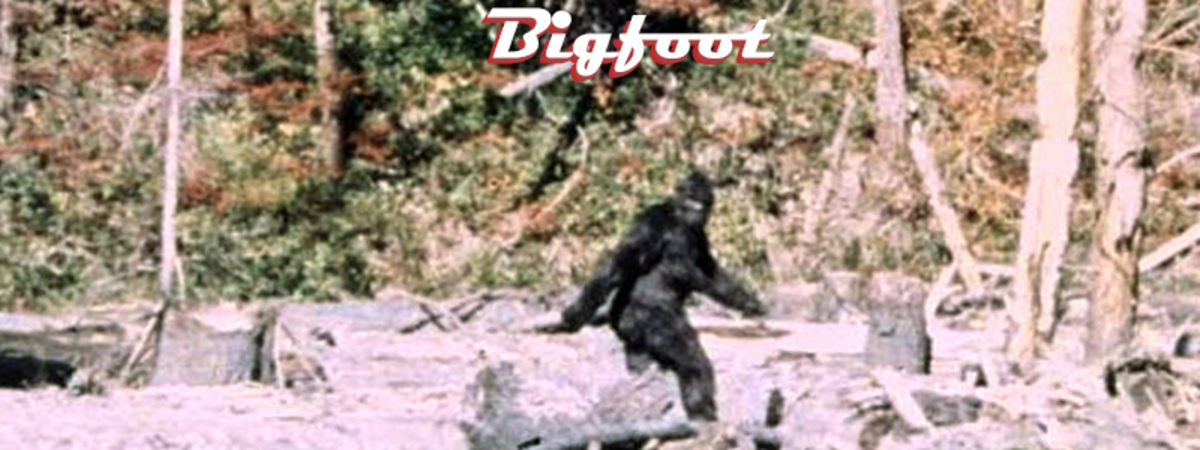Kamikaze Pilots and War Myth
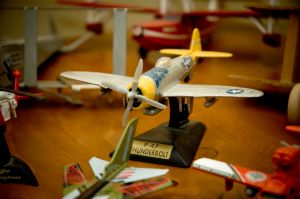
Portrait Of A Kamikaze Pilot
A Kamikaze pilot is commonly held to be some kind of crazed pilot whose airbourne battle skills were greatly enhanced by lack of regard for his own life.
Intensely dedicated to the task of killing enemy aircraft and pilots, a Japanese 'Kamikaze' pilot was greatly feared, and displayed a fighting style in the air that had never been seen before.
Pilots of the Kamikaze variety are said to have flown in dangerous, erratic fashion, incorporating 'dive-bombing,' looping techniques, and all manner of unpredictable flight patterns.
Kamikaze pilots have been seen mainly as suicidal, homicidal and sometimes, as somewhat mystical - if not 'entirely insane.' These pilots would even turn their aircraft into a bomb, sacrificing their own lives in order to pointedly smash into enemy fixtures and cause the largest explosions possible.
Trained in ancient Samarai principles, called "The Samarai Code," Kamikaze pilots did what they did for their country, and more so, for their Emperor, believing that their Japanese Emperor was a living god. They would scream out, "BANZAI !!" or "Long Live The Emperor!" as they pointed their aircraft toward their targets, knowing full well they would not survive the maneouver.
The word 'kamikaze' is derived from a term meaning 'divine wind' and refers back to the 'divine wind' that saved Japan during ancient times, around the year 1274 when the Mongols attempted an invasion. (Kubla Khan's fleet was decimated by a typhoon off the Southern Japanese island of Kyushu. The typhoon 'wind' was likely the 'divine wind' in question here).
Just Myth
Greater emphasis was placed on the Japanese Kamikaze pilots in years after the World Wars than was ever talked about during wartime.
'Explanations' emerged for the flight patterns of Japanese pilots AFTER WWII was over because the behaviors in the air never were very well understood by Americans and Europeans for a very long time.
The explanations became the 'common things said' about Kamikaze pilots today, in the guise of 'a story from one who was there,' - an American WWII or British WWII pilot, for instance.
Almost all of the 'explanations' are non-factual, and are impressions of a people and culture known to have a 'mystical' background that Americans and Europeans simply have not understood for generations.
In short, "Kamikaze Pilot Stories" are just that - STORIES...descriptions of things experienced in wartime with a label and explanation tacked on, which is a faulty explanation at best.
Japanese pilots were as human, sane - and - as AFRAID - as any other pilots involved in warfare! Japanese pilots had families, friends, homes, hobbies, just like any other people across the globe.
Kamikaze stories serve to repeatedly 'de-humanize' the Japanese, even if the stories single out a certain time period - even if what is told means that 'at that time, the Japanese were Kamikaze, chaotic and crazy.'
There are better explanations - MUCH BETTER, MORE LOGICAL explanations for the flight patterns and pilot behaviors of the Japanese during WW II - however - the portrait of The Japanese Kamikaze Pilot is so ingrained and wide-spread, it is hard for people to believe in the 'true explanations.'
1. Pilots were conscripted
2. Pilots were utilizing sub-standard equipment
3. Almost all alleged 'records' of 'Kamikaze Pilots' from the WWII era showing these men as 'crazed' are accounts conveyed by American and European points of view - and most of these have been debunked as 'mere opinion' and not 'fact.'
Way Myth Bits'n'Bytes
Not Suicidal Dive Bombers
Japanese pilots were NOT suicidal dive-bombers.
In fact, the 'dive-bombing' has been largely misunderstood.
What has been described as 'aggressive attack dive-bombing' was more likely survival maneouvre tactics attempted by Japanese pilots when their aircraft engines would stall !
Included late in WW II, the Japanese were not natural aircraft fighters. The way that WW II developed put the Japanese in a position where they quite suddenly realized a need to deploy aircraft or be quickly overtaken by other forces and lose their nation.
Air-combat became the way of the war in the area and the Japanese had to stretch to meet the demands of the war. Older model airplanes were what became available to the Japanese at the funding level that they could manage, and so - the Japanese flew outdated machinery while Europeans worked with cutting edge equipment.
Whole fleets of aircraft (albeit small fleets) were gained and utilized by the Japanese. The only problem was - most of the models were the same aircraft that were rejected by pilots from other countries because they simply had 'better' aircraft available!
Engines in outdated and sometimes substandard aircraft models would often stall, leaving Japanese pilots to a 'sure death,' unless they knew how to utilize 'emergency tactics' and point the nose of the plane downward and attempt to 'glide out of' the problem. Many 'nose-dive' tactics resulted in the safe landing of Japanese aircraft, with pilots and craft intact. If anything SHOULD BE SAID ABOUT THIS - it is that Japanese pilots were skilled at making near-impossible 'touch-downs' via 'glider methods' in aircraft that were definitely not glider planes!
The greatest skill of the Japanese Kamikaze pilots SHOULD BE KNOWN as "the skill to manage in the style of a glider plane in mechanical inventions that were never build with the capacity to respond like a glider plane." Essentially, these Japanese pilots learned much more about how air currents work than the average pilot from other countries because, ultimately, if/when the inferior Japanese machines "conked out," all that was between the pilot and death was the hope that when the malfunction occurred, the machine was in a position to be able to utilize air currents, natural dynamics of gravity, etc, so the pilot could 'coast out' of a bad situation. If a "stall" happened when the airplane was at a wrong angle or a certain steering function 'locked up,' frankly, the pilot would be entirely incapable of correcting anything and would know, for certain, that his death was imminent within moments or seconds.
Naturally, the appearance of airplane "behavior" in the air, the fact that flight patterns weren't normal by any means in so many instances - that NO PILOT IN HIS RIGHT MIND would fly an airplane in certain patterns or ways...probably led others to conclude that the Japanese pilots were insane, suicidal pilots. Really, many of the Japanese who went up in the air, did so under terrible odds - not from engaging in mechanical battle in the air with pilots of other nations - but simply because each time they went up in the air, their inferior machines could malfunction or they could end up within reach of superior aircraft with few tools to protect themselves or survive.
It's almost ridiculous that nowadays, most people believe these Kamikaze Pilots were such a threat because there are entire fields of study which examine propaganda film from all nations during the war era. These films show how Japanese turned the early stories and fear of percieved "Kamikaze Pilots" against their own people and pilots during the short duration of time the Japanese were involved in air combat. The first rounds of early first Japanese pilots were quickly killed off, the "suicide pilot" myth circulated...and the last few rounds of Japanese pilots were even "informed by" the kamikaze myths in Japan... With almost no training time, the last rounds of conscripted, teenaged child pilots were sent up in the air, believing in the myths, themselves...they were just human manequins, expendable - necessary visible targets to save face for the Japanese military powers. In short...once Japan started sending men up in the air, they had to continue to do so - on principle...until the war ended or until a complete loss of authority and power was reached.
Japanese Pilot Survivors Finally Able To Tell Their Stories
War Induced Distortions
This next argument will likely draw a lot of flaming opposition but I'm going to assert that WAR DISTORTS MEMORY...
...so that many first-hand accounts of what has happened during a previous wartime are DISTORTED reports on reality.
Myth: "I was THERE, so I know what happened!"
Truth: if you were present during wartime, involved in the horrendous experience of conflict, then your memories can be hampered by all the emotional, mental, physical and spiritual stress that is involved with war and combat.
Many people dissociate during times of high stress - whether it be in warfare or otherwise. This can be as simple as the self-hypnotic sort of 'zoning out' like happens when one is tired, and finds that when watching television, one ends up staring off into space for a few seconds or minutes. Or it can be as significant as being in a crisis situation, then later finding that one cannot remember all the details of what happened in that crisis situation, and feeling like the linear progression of a serious of events happened "in a blur," with only a few details emerging with pinpoint clarity.
Many of the global wartime participants who returned home from the world wars did so with fragmented memories due to a very natural phenomenon of the brain/mind which causes dissociation as a coping mechanism for the mind in very severe situations. Without this natural coping tactic of the human brain, soldiers and pilots would not have survived the wars with any reasonable mental faculties remaining.
Plain and simply: WAR IS INSANE - it goes against not only common sense, but also against our instincts. Even the animalistic, basic instincts of both man and animals prompt people and animals to fight when personally/individually threatened. Instincts in any creature do not prompt for the excessive attacking of any other species where direct threat to self is not indicated.
Instincts for survival reactions do not project further than protecting a very localized area and protecting our kin and close relations.
Survival instinct does not logically expand to include engaging in conflict for survival in areas hundreds of miles away from home, nor does it include protection of entire nations...
Nationalism and patriotism are man-induced, learned behaviors and mind-sets which can be very good during times of peace - but are always destructive during wartimes...learned patriotism and related 'isms' help regular people to justify outrageous forms of violence, plain and simple.



